Are you interested in growing flowers in raised garden beds? If yes, this article is the perfect guide for you. You can grow many flowers in a raised bed, and many of them are best for beginners.
Flowering plants don’t need much space between rows, and they will do extremely well if they are closely spaced.
If you want, combine your flowering plant with veggies, herbs, and fruits in raised beds, as they will help replenish nutrients in the soil and prevent harmful pests.
Marigolds, Nasturtiums, Borage, Sunflowers, Calendula, Lavender, clover, Lupine, Phacelia, and Cosmos, are some of the best flowering plants you can grow in a raised bed. These flowers attract pollinators beneficial for the herbs and veggies you grow in your garden.
This article will discuss which flowering plants grow best in a raised garden bed and the care instructions. So, let’s begin.
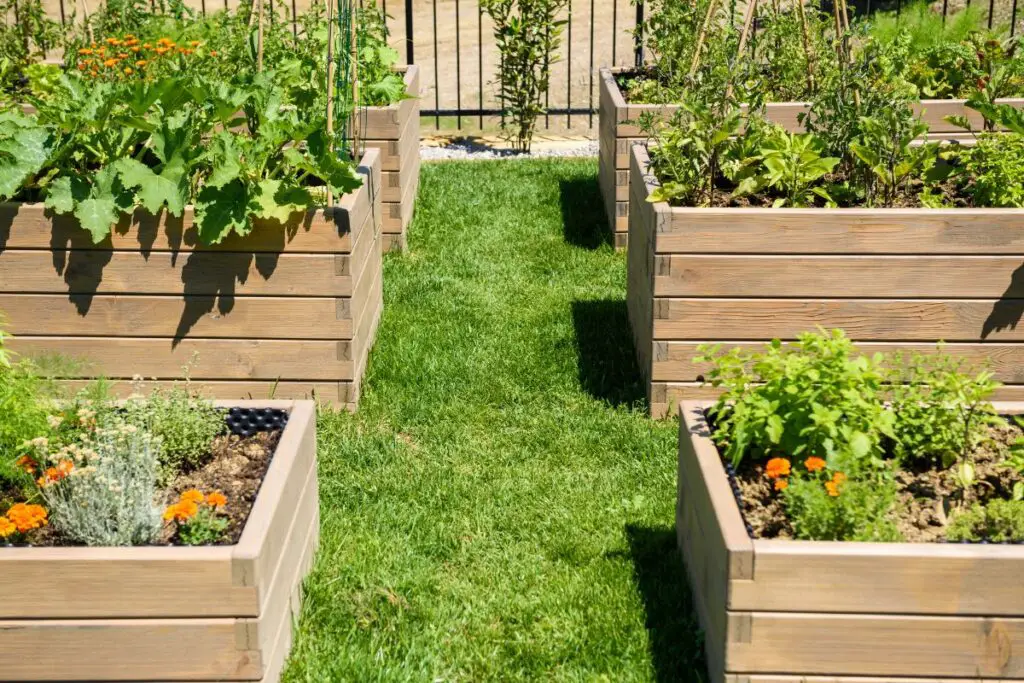
20 best flowering plants for a raised garden bed
The best flowering plants for a raised garden bed are:
1. Marigolds
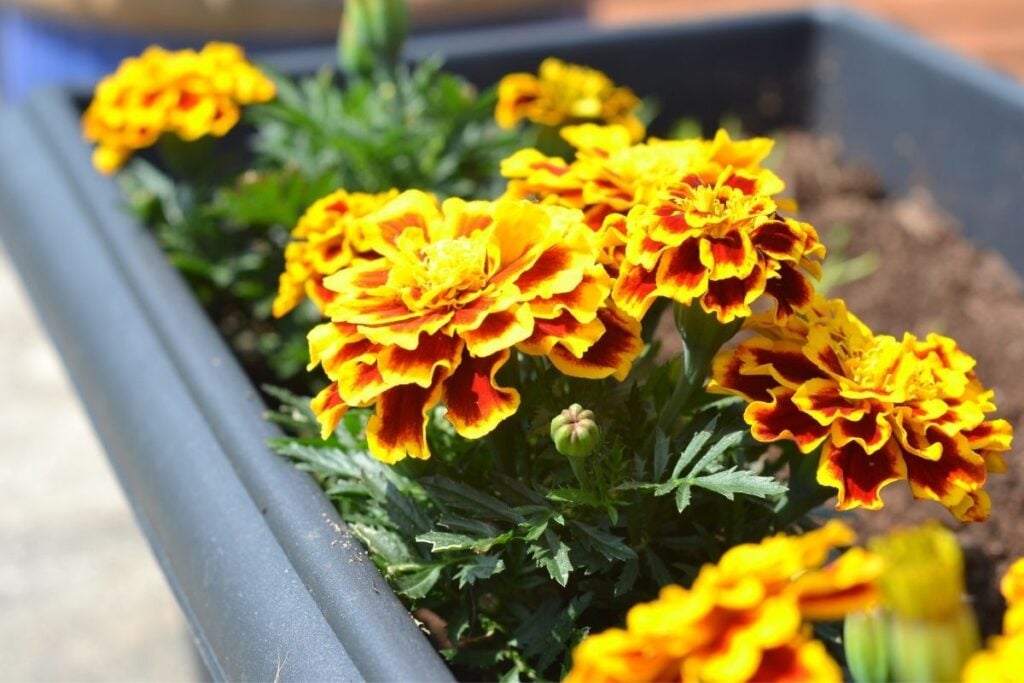
Tagetes patula, commonly known as marigolds, is one of the best options for a raised bed.
Marigolds have double flower heads in orange, yellow, and mahogany.
These flowers are not only very pretty but edible and useful.
It is also a great companion plant.
Marigolds prevent the growth of detrimental nematodes by excreting special chemicals.
This flower has a pungent smell that attracts beneficial pollinators like bees.
Care for marigold
- Watering: The marigold plants can’t tolerate heat, so they don’t need much watering. You can water your marigolds whenever the raised bed starts drying out. Always water the plants at the base and avoid overhead watering.
- Sunlight: Marigolds will grow best in full or partial sunlight, so you can plant them in any spot of your raised bed, whether sunny or shady.
- Soil: The soil for marigolds should be fertile and well-drained. Avoid giving them any extra doses of fertilizers since too many fertilizers will harm them.
2. Calendula

Calendula is similar to marigolds in appearance that grows well in raised beds.
These flowers are popular for attracting bees, butterflies, and other pollinators.
However, sometimes, they act as trap crops for pests like aphids.
Calendula has a fibrous and thick root system that protects the soil from blowing away.
Once the petals of the flowers start fading, you can use those petals as compost activators.
It is said that calendula can also forecast the weather, so if the petals of the flowers close, rain is coming.
Care for calendula
- Watering: Give your calendula 1-1.5 inches of watering every week.
- Sunlight: Calendula grows well in full or partial sun, so you can plant it anywhere in your raised bed.
- Soil: Calendula shows the best growth in nitrogen-rich soil. You can add some compost to the soil to give sufficient nutrients to the flowers.
3. Nasturtiums
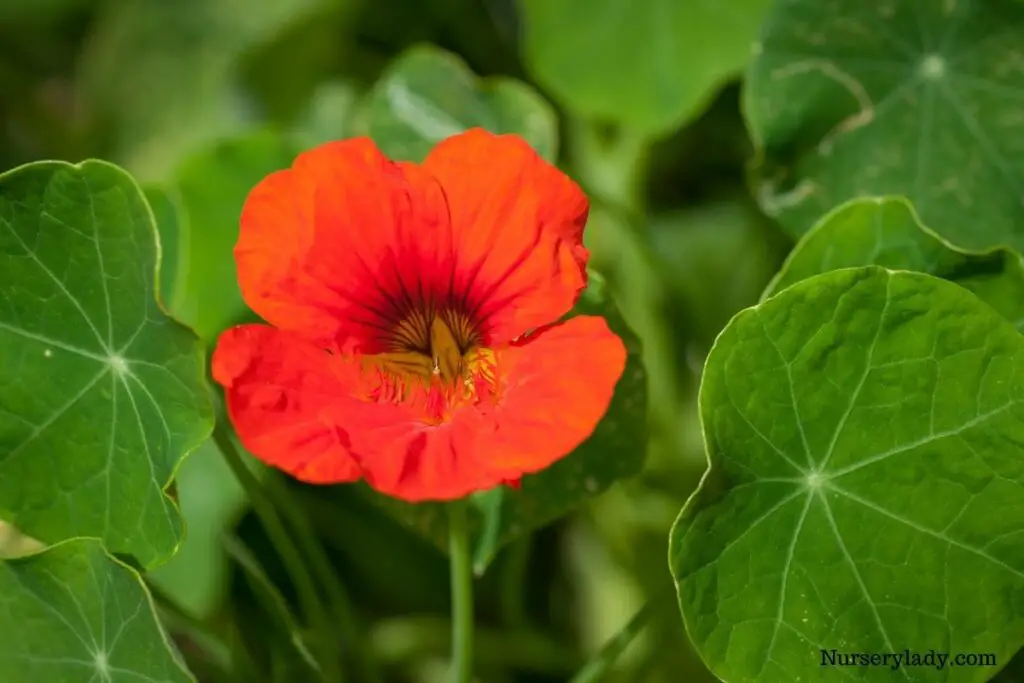
Nasturtiums are compact, bushy flowering plants that produce bright orange and yellow flowers with no spurs.
Nasturtiums, during their blooming season, attract beneficial pollinators.
They also behave like a trap crop and attract pests, protecting your other vegetable crops in this way.
They are great companions to commonly cultivated plants in raised beds.
They are very useful as they suppress weeds and help retain soil moisture.
Care for nasturtiums
- Watering: Give your nasturtiums 1 to 1.5 inches of watering once weekly.
- Sunlight: Grow nasturtiums in a spot with 6- 8 hours of full sun each day.
- Soil: Plant your nasturtiums in well-drained soil. However, clayey soil also works well for them.
4. Sunflowers

Sunflowers are one of the most popular and loved flowering plants grown in raised beds.
Sunflowers have many benefits. Firstly they can act as a climbing support for other plants, and secondly, they provide edible, tasty seeds.
However, one problem with sunflowers is that they can inhibit the growth of some nearby plants.
They have an allopathic effect on surrounding vegetables and flowers, so it’s important to plant them far from other plants in the raised bed.
Care for sunflowers
- Watering: Water your sunflowers once every week. It will give them the moisture they require for growth.
- Sunlight: The sunflowers grow best in full sunlight. So, plant them in an area that will give them plenty of sunlight throughout the day.
- Soil: This bright yellow flower grows best in well-drained soil.
Looking for gardening supplies? We have tested 100's of products before recommending them to you guys. Check out our best pick below:
| Image | Gardening Supplies | Best Price? |
|---|---|---|
 Top
Top Top
Top | Raised Garden Bed Kit | Check On Amazon |
 | XLUX Soil Moisture Meter, Plant Water Monitor, Soil Hygrometer Sensor for Gardening, Farming, Indoor and Outdoor Plants, No Batteries Required | No Results |
 Top
Top Top
Top | 82 Pcs Garden Tools Set and Extra Succulent Tools Set | Check On Amazon |
 | Joeys Garden Expandable Garden Hose with 8 Function Hose Nozzle, Lightweight Anti-Kink Flexible Garden Hoses, Extra Strength Fabric with Double Latex Core, (50 FT, Black) | No Results |
 Top
Top Top
Top | Dual Chamber Compost Tumbler | Check On Amazon |
 Top
Top Top
Top | Sunnyglade Plant Stakes | Check On Amazon |
 Top
Top Top
Top | Organic Cold Pressed Neem Seed Oil | Check On Amazon |
 Top
Top Top
Top | Mighty Mint Gallon :-Insect and Pest Control Peppermint Oil | Check On Amazon |
 Top
Top Top
Top | Scotts DiseaseEx Lawn Fungicide | Check On Amazon |
 Top
Top Top
Top | Jacks Classic 20-20-20 All Purpose Fertilizer | Check On Amazon |
 Top
Top Top
Top | 30,000 Seeds Pollinator Attracting Wildflower Mixture | Check On Amazon |
 Top
Top Top
Top | Survival Vegetable Seeds Garden Kit-Over 16,000 Seeds | Check On Amazon |
5. Lavender
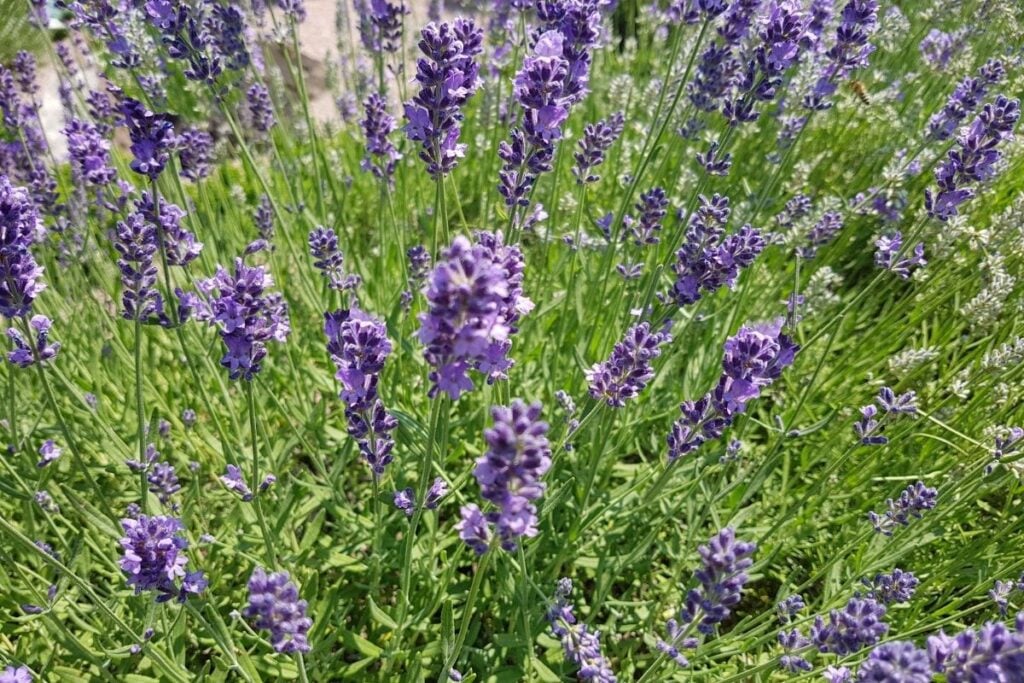
The lavender flowering plants will grow beautifully in a raised garden bed when provided with sunny, fast-draining soil conditions.
It grows best near Mediterranean herbs like asparagus.
I suggest you plant the lavender on raised hills if you want to grow them with vegetables. They will make a beautiful edging.
They also attract various insect pollinators because of their sweet fragrance.
Care for lavender
- Watering: The English lavender should get watered 1 to 2 times weekly for optimum growth. Never overwater your lavenders, as this will make the soil soggy, and the plant’s roots will rot.
- Sunlight: The English lavender likes growing under full sun, so select a spot in your raised bed that will provide them with 6-8 of sunlight each day.
- Soil: The English lavender will grow best in well-drained soil. These plants are drought tolerant, so they can also survive dry conditions.
6. Winter flowering shrubs
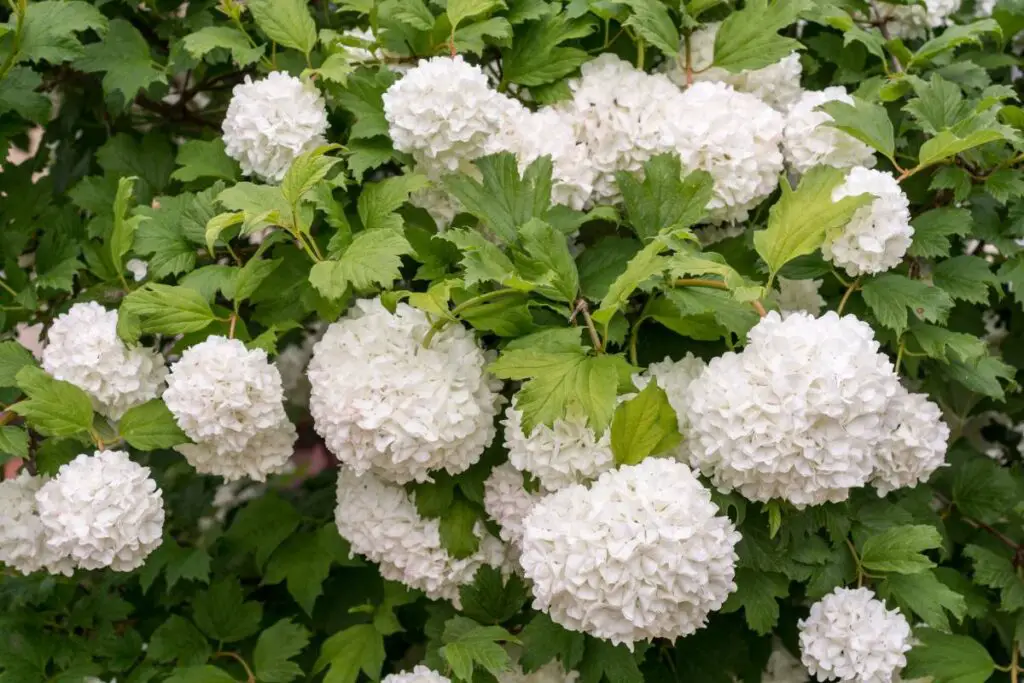
Winter flowering shrubs do great in raised beds, and you don’t need much space to grow them.
They are evergreen shrubs that fill the garden with colorful, eye-catching flowers during winter.
Winter flowering shrubs like Sarcococca, mahonia, viburnum x bodnantense, viburnum tinus, and hamamelis grow well in raised beds.
Except for viburnum tinus, these shrubs produce a pleasing smell, so I suggest you plant these shrubs in a raised bed near your windows.
Care for winter flowering shrubs
- Watering: The winter flowers will require watering once every week.
- Sunlight: The winter flowering shrubs will grow best in full sun to partial shade.
- Soil: The soil for winter flowering shrubs should be rich and well-drained.
7. Sweet peas
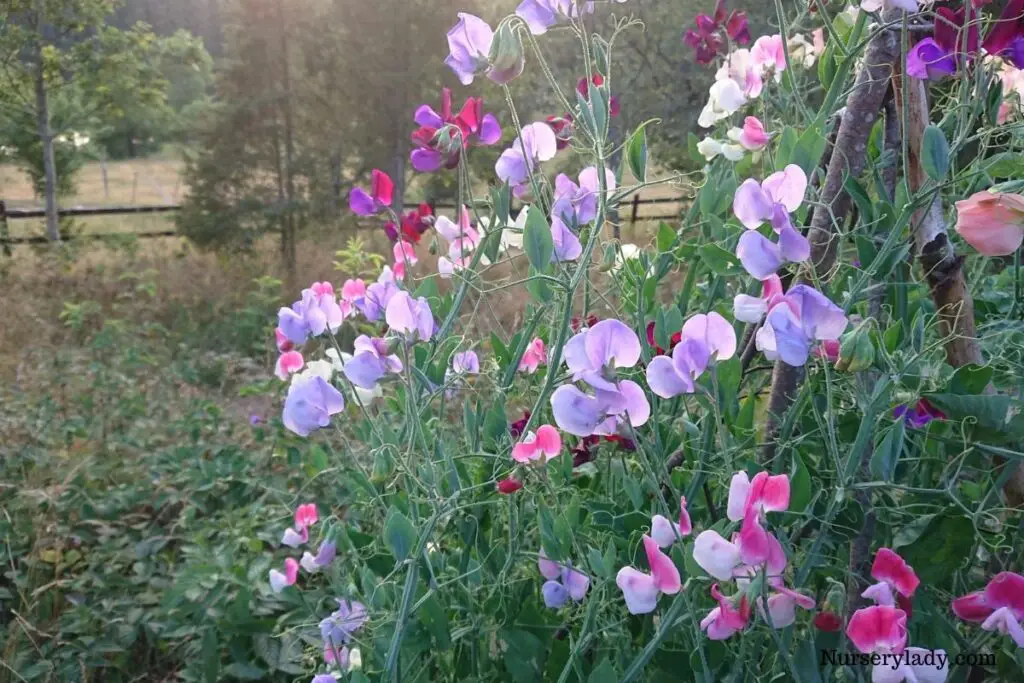
Sweet peas are one of the favorite flowers of many gardeners.
The sweet peas have folded petals that look like butterfly wings.
They are non-edible to humans, but many garden creatures enjoy having them.
They are great companion plants to several vegetables like peas, beans, and other plants that grow on trellis mounted on raised beds.
Like other flowers I have discussed above, they attract pollinators to your garden because of their sweet fragrance.
Care for sweet peas
- Watering: Sweet peas like thriving in moist soil, so they will require more regular watering than other low-maintenance plants.
- Sunlight: Sweet peas need full sun for optimum growth. Plant them in a location that will give them plenty of sunlight.
- Soil: Keep the soil moist, as this will create chances for a bountiful sweet pea plant.
8. Cosmos
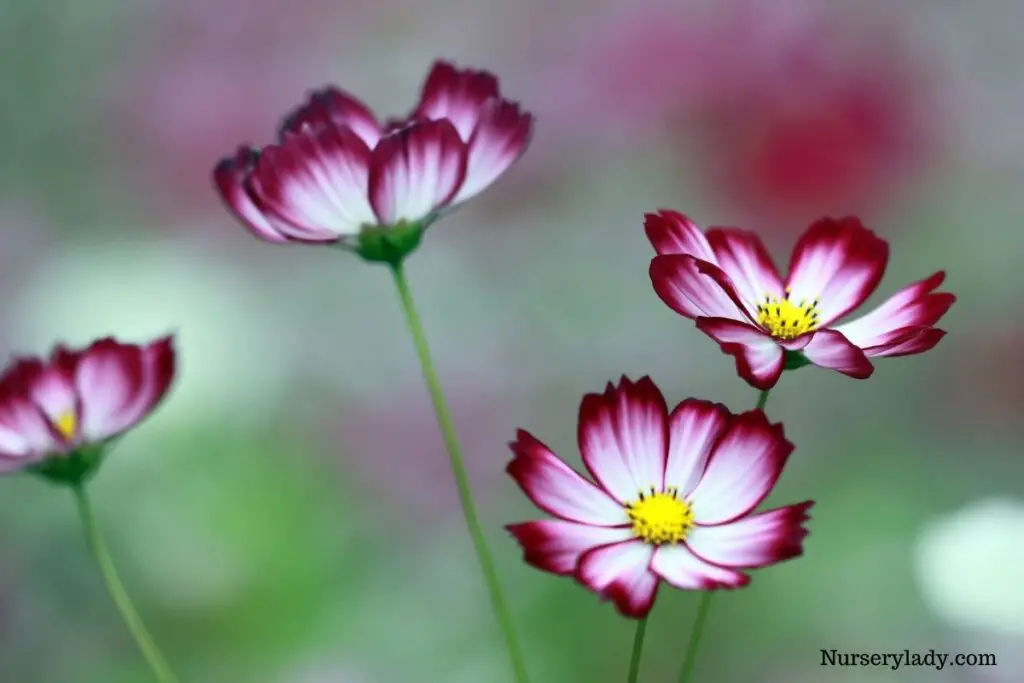
Cosmos are the best flowering plants for those who have just started square-foot gardening.
Cosmos are colorful daisy-like flowers with long, slender stems.
They grow well in raised beds when planted with other vegetables.
They are easy to grow from seeds and can survive poor soil conditions.
They are wildlife-friendly flowers that attract good insects, like predatory ones that eat sap-sucking bugs.
Care for cosmos
- Watering: Cosmos like growing in dry soil. It would be best if you only watered the plants during prolonged drought.
- Sunlight: Plant cosmos in full sun. During hot summers, provide the plants with some afternoon shade.
- Soil: Grow your cosmos in well-draining soil rich in organic matter. Avoid adding any fertilizers, as they can’t handle poor soil.
9. Phacelia
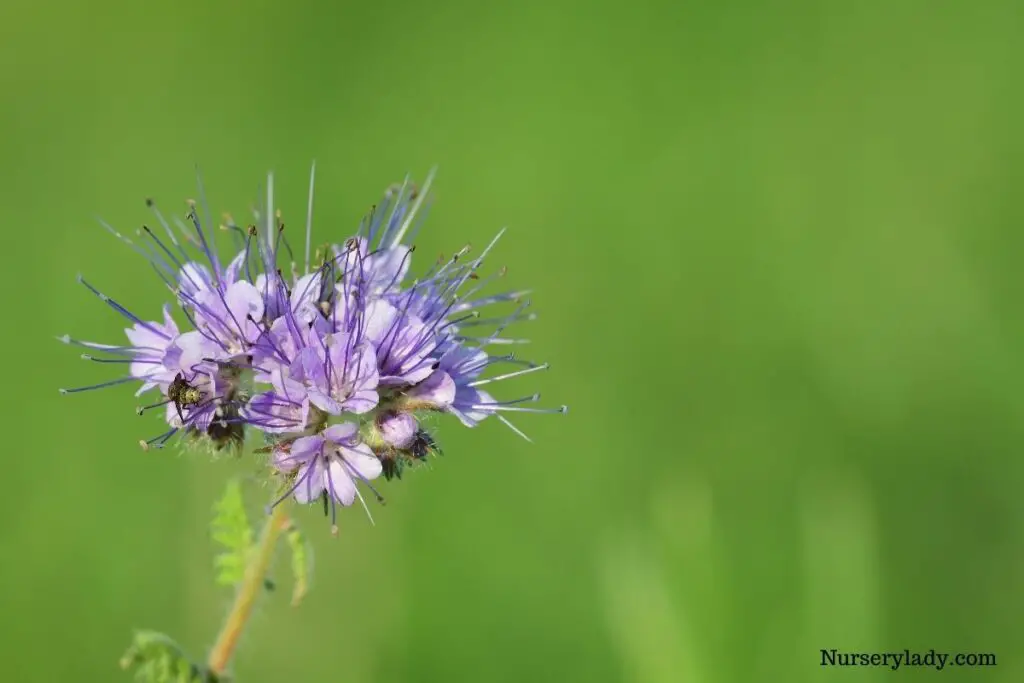
Phacelia is a sun-loving annual known for its lavender-blue showy flowers.
Pollinators like bees, hoverflies, and beneficial bugs’ get attracted to their flowers.
These flowers are great companion crops and create good soil cover and prevent the growth of harmful weeds.
The plant’s extensive root system helps improve the soil’s structure.
They are self-seeding plants, so you can cut and use them as green manure before the plant grow flowers.
Use one-half of the phacelia for planting in your garden and the other half as green manure to improve the soil in your raised beds.
Care for phacelia
- Watering: Phacelia is drought-tolerant plants, so their watering requirements are not very high. Water the plants whenever the top 2 to 3 inches of the soil feel dry.
- Sunlight: Phacelia prefers growing in full sun but can tolerate partial afternoon shade.
- Soil: The soil for phacelia should be dry and well-draining. While planting, you can amend the raised bed with a balanced organic fertilizer for better results.
10. Clover
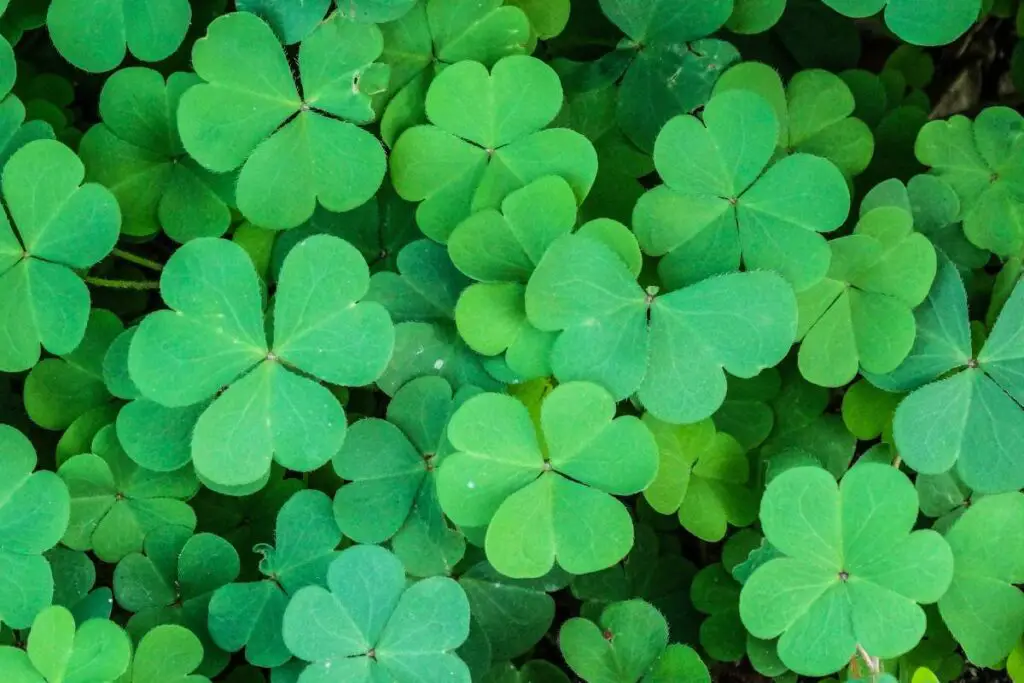
The flowers of clover plants are very small and are white or light pink.
Clover flowers are nitrogen-fixing plants that improve the fertility of the raised bed if used as green manure.
They not only fix nitrogen but helps maintain soil moisture and the growth of pesky weeds.
They have a beautiful look with a pleasant smell.
They attract pollinators like bees and beneficial critters.
Care for clover
- Watering: Clover loves to thrive in moist soil but can survive in dry soil. During the growing season, water the soil whenever the top 2 inches of the soil become dry.
- Sunlight: Clover prefers growing in bright, indirect light. So choose a shadier spot of your raised bed for planting them.
- Soil: Clover will grow best in well-drained soil. Grow the plants in clayey or sandy loam soil for the best results.
11. Lupine
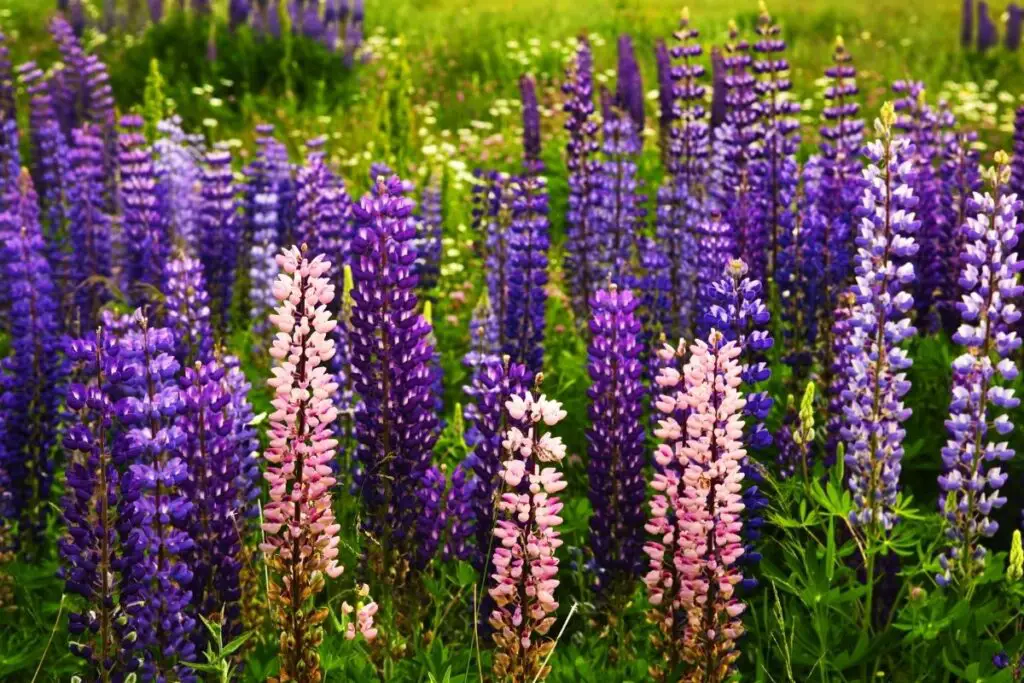
Lupine has a showy, elongated cluster of blue and purple flowers similar to sweet peas.
Lupine is another nitrogen-fixing flower that grows well in a raised garden bed.
Like other vegetable crops like peas and beans, these flowering plants will help improve the soil’s nitrogen.
Lupine is a bee-friendly plant.
They attract pollinators and beneficial insects to your garden’s flowers, fruits, and vegetable plants.
Care for Lupins
- Watering: Lupine will grow well if they are watered regularly during the growing season. They don’t like soggy soil so never overwater the plants.
- Sunlight: Lupine prefers to grow in full to partial shade.
- Soil: Lupine will grow best in moist, well-drained soil.
12. Borage
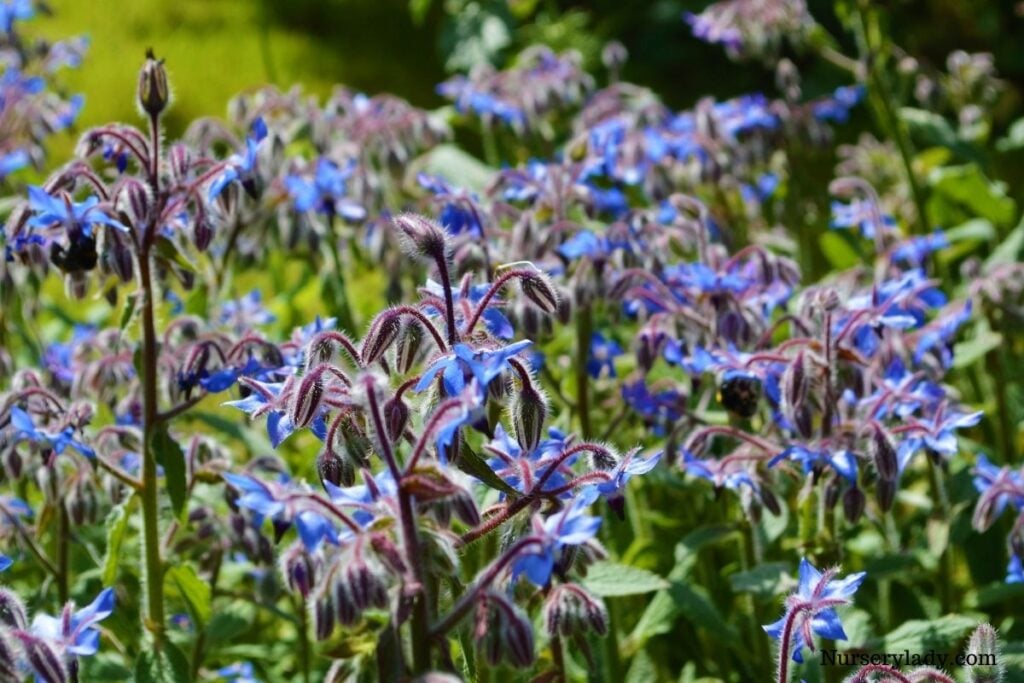
Borage is known as starflowers because its star-shaped blue flowers look striking and pretty.
Borage is easy to grow and care for.
They are self-seeding flowering plants, and they will return year after year once planted.
The borage leaves are toxic, so keep your pets away from the plant.
Prolonged consumption of the leaves will cause cancer and liver damage.
However, the flowers of borage are highly attractive to some pollinators like honeybees and bumblebees.
Care for borage
- Watering: The borage plants need minimal watering. Water the plants at their base whenever the soil feels dry.
- Sunlight: Both full and partial light will work well for borage, so there are various options for selecting spots for borage in raised beds.
- Soil: Plant your borage in moderately moist, well-drained soil.
13. Poppies
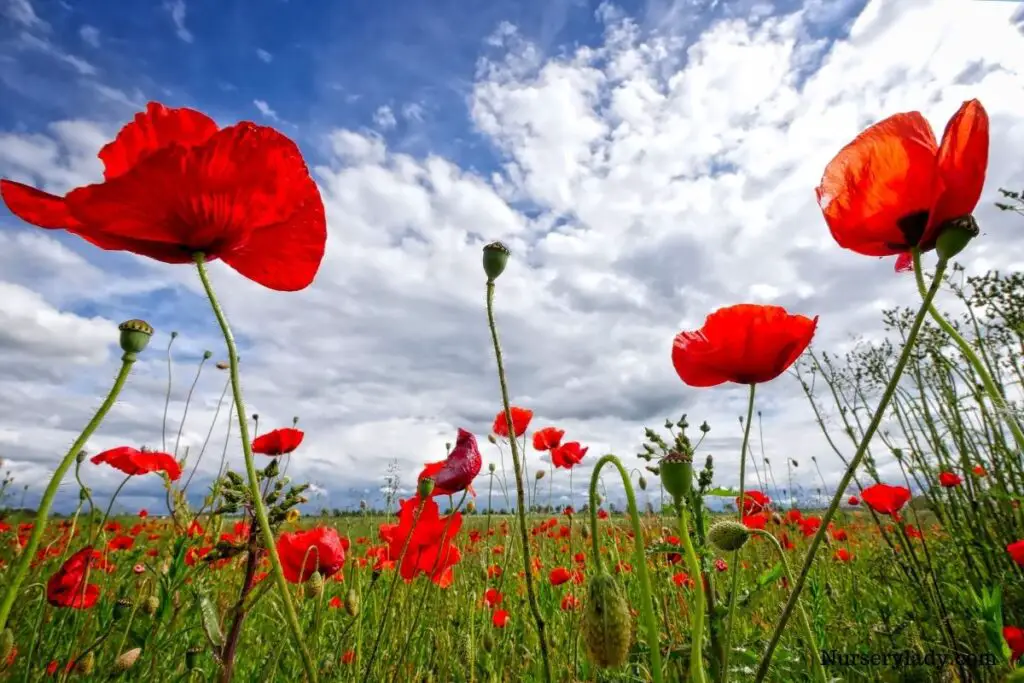
Poppies are the perfect choice for raised bed, and the flowers bloom will gracefully if provided with proper care.
These flowers come in various colors, like purple, orange, and red.
They are self-seeding plants and will come every year after you plant them.
They are low maintenance and best for a beginner in gardening.
Pollinators like bumble bees, honey bees, and solitary bees get attracted to poppies.
Care for poppies
- Watering: Provide your poppies with 1 inch of water every week.
- Sunlight: Poppies prefer to grow in full sunlight. Plant them in an area that will provide them with 6 hours of sun daily.
- Soil: Plant the poppies in a well-drained, humus-rich loamy soil.
14. Pansies
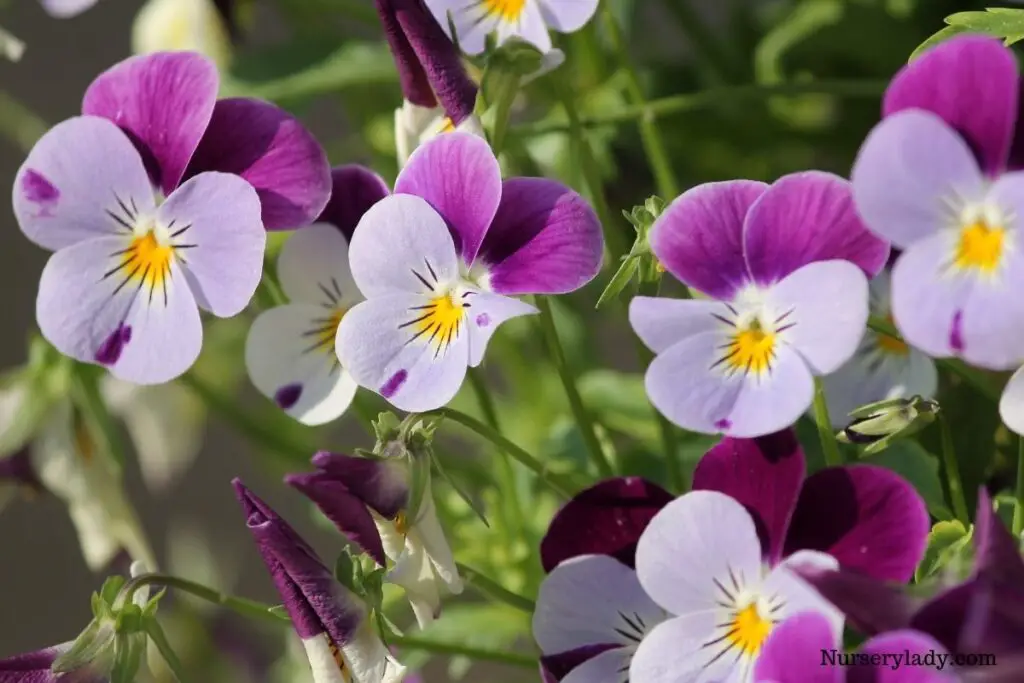
Pansies are easy to maintain and grow, so they are the most popular choice among gardeners for raised beds.
The blooms are single, with five petals that are round in shape.
They are highly attractive to pollinators like bees.
Care for pansies
- Watering: Pansies should get watered regularly whenever their soil feels slightly dry. Water the plants at their base and not on the blooms to prevent the spread of fungal diseases.
- Sunlight: Plant the pansies in a spot that provides them with full sun or partial shade.
- Soil: The pansy will grow best in soil rich in organic matter. Amend the raised bed with compost before planting the flowers.
15. Petunias
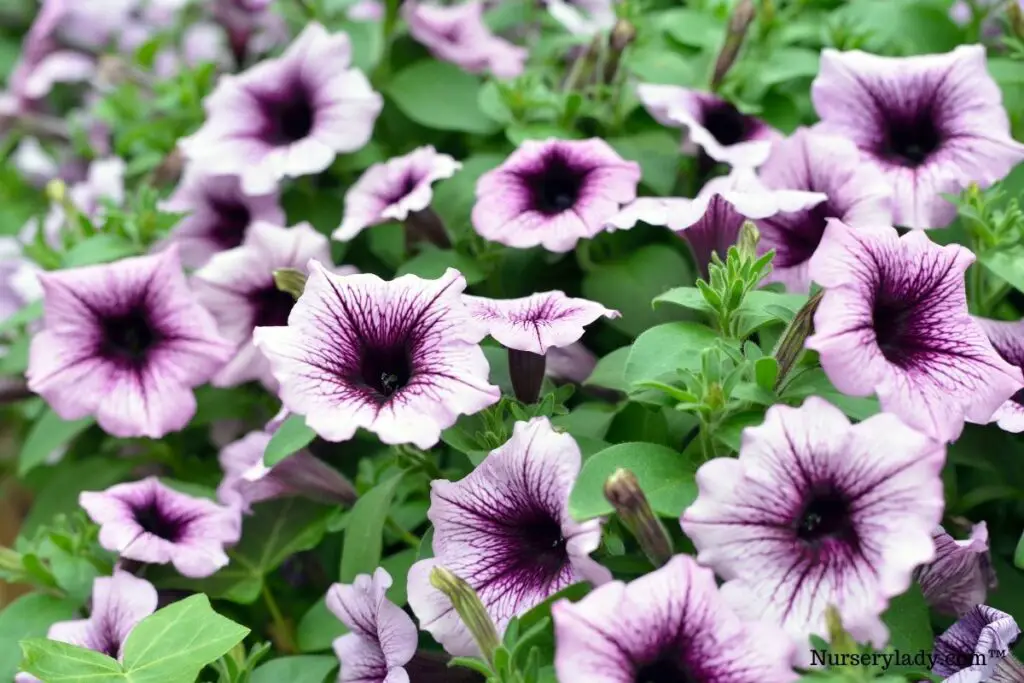
These flowering plants have distinctive funnel-shaped blooms that make them the most picturesque addition to the raised bed.
They are easy to grow and maintain, so it is the best choice for beginners in gardening.
Pollinators like bees, hummingbirds, and hawk moths get attracted to petunias.
Care for petunias
- Watering: Give your petunias about 1 to 1.5 inches of watering every week.
- Sunlight: The petunia grows in full sunlight but can survive in a shady place.
- Soil: Grow your petunias in fertile, well-draining soil.
16. Daylilies
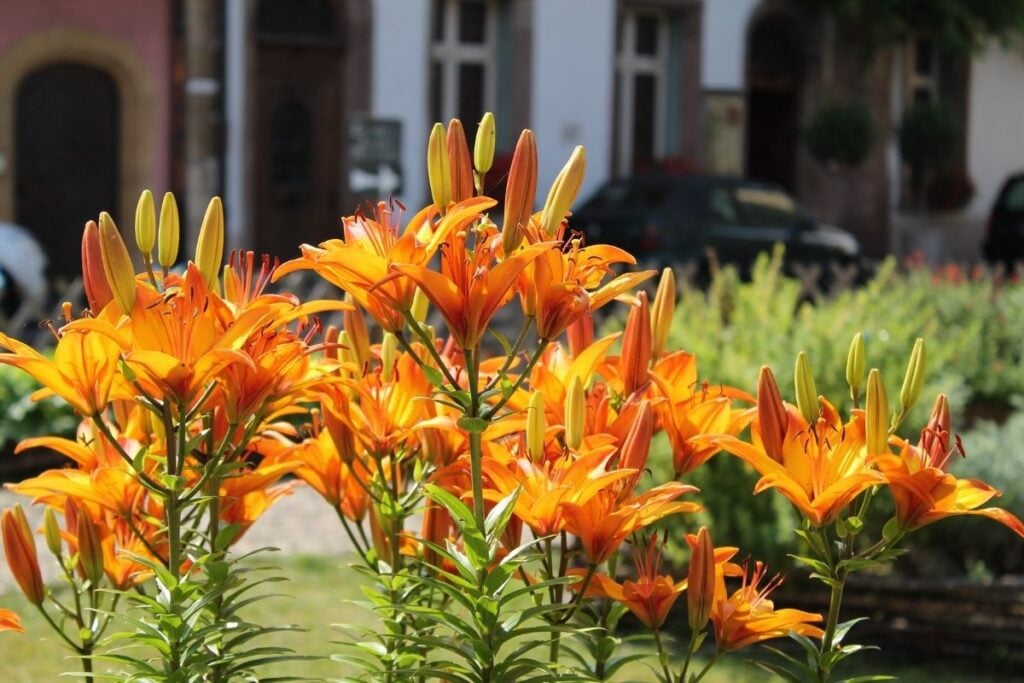
Daylilies come in a huge variety, including blooms in orange, red and pink colors.
They are perennial plants and will return each season if given proper care.
Daylilies are attractive to numerous pollinators like bees and butterflies, and sometimes hummingbirds.
Care for daylilies
- Watering: Give your daylilies an inch of watering once a week to encourage beautiful blooms.
- Sunlight: The day lilies grow best in full sunlight. So select a spot in the raised that provides them with 6 hours of sunlight daily.
- Soil: Plant your daylilies in well-drained soil. For fertilizing the plant, select a nitrogen-rich organic fertilizer.
17. Impatiens
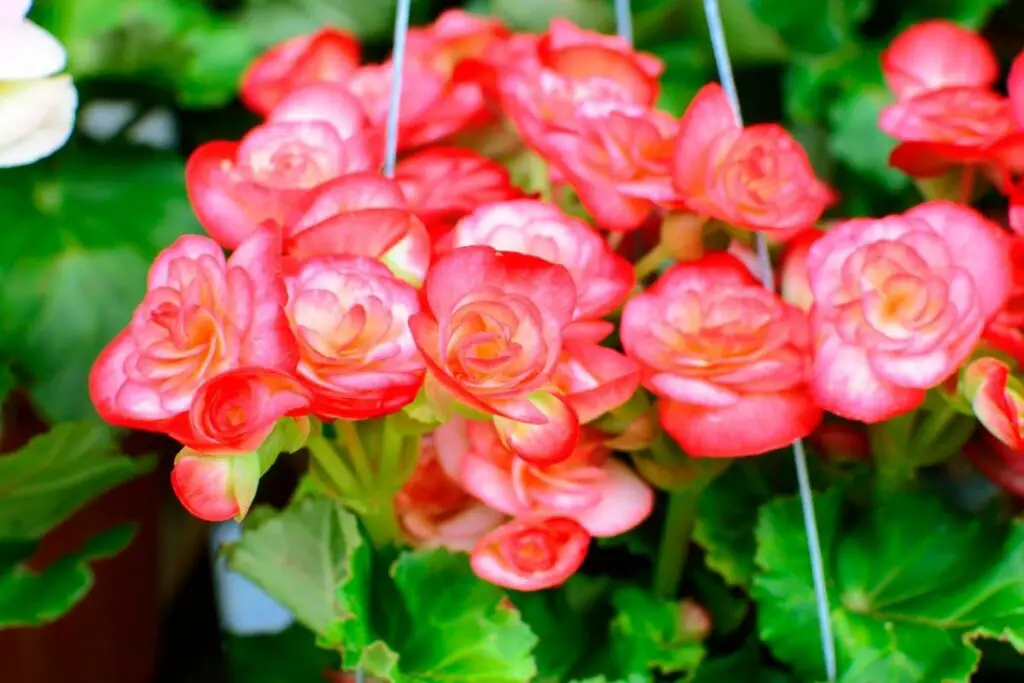
The impatiens are delicate nodding flowering plants that come in purple, pink, yellow, and more colors.
They are fuzzy with their need and requirements and slightly need more care than other flowering varieties.
However, their sophisticated beauty makes everything worthwhile.
Care for impatiens
- Watering: Impatiens prefer to grow in moist soil so water them regularly.
- Sunlight: Impatiens like growing under partial shade, so plant them in the raised bed area where they will get more shade.
- Soil: Grow your impatiens in rich soil with good drainage.
18. Penstemon
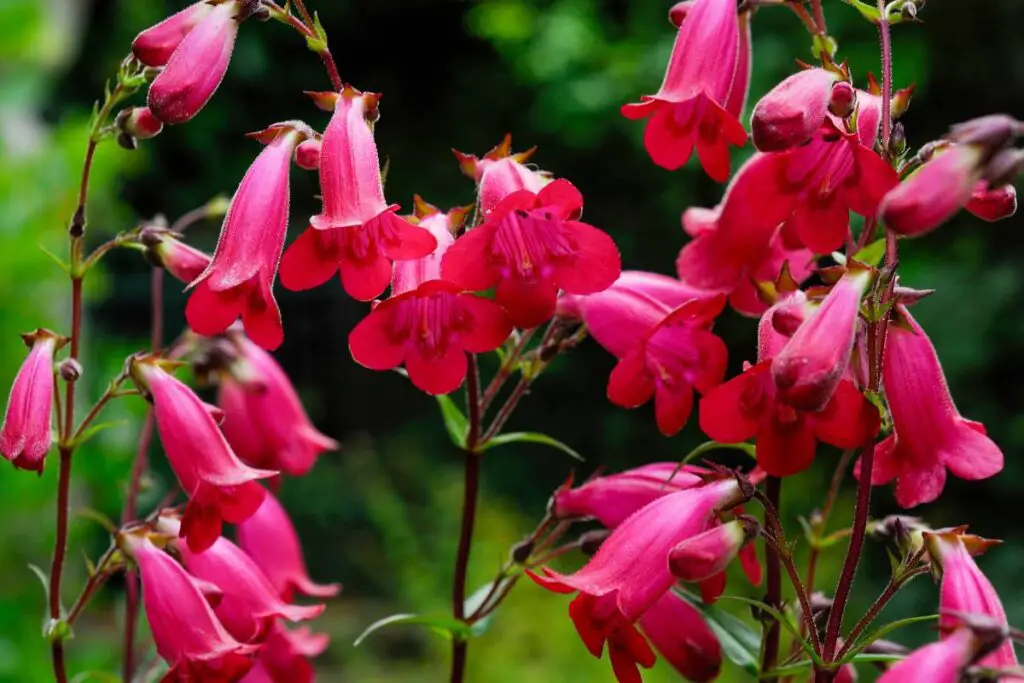
The penstemon flowers are also known as beardtongue because of their trumpet-shaped blossoms.
The blossoms of penstemon are eye catchy, giving a unique look to the garden.
They not only attract pollinators but even bring bees, butterflies, and hummingbirds to the raised bed.
Care for penstemon
- Watering: Provide your penstemon with an inch of watering every week.
- Sunlight: Plant the penstemon in full sunlight for the best results.
- Soil: Grow your penstemon in well-drained soil.
19. Hellebore
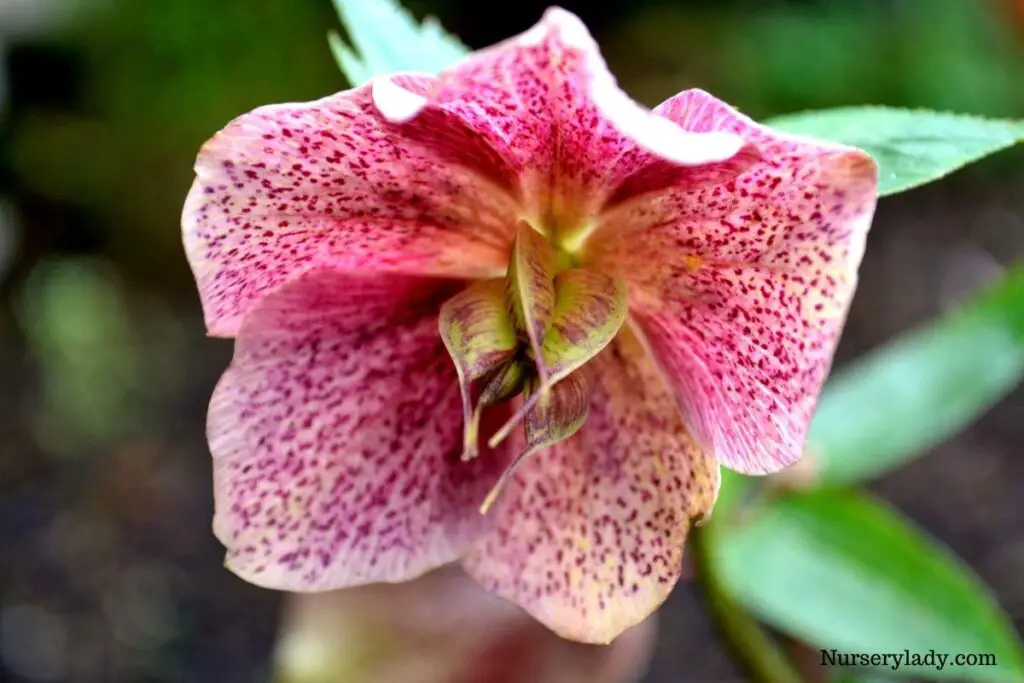
Hellebore is a unique-looking flower that blooms in white, burgundy, and dusky pink.
They are commonly known as Christmas roses, as they can brighten your garden during the winter and early spring.
To get flowers in winter, you must plant the hellebore during the fall and spring seasons.
Care for hellebore
- Watering: Hellebore prefers to grow in moist soil, so water the plants whenever the soil feels dry.
- Sunlight: Hellebore will grow best in dappled shade. So, make sure the planting spot allows partial light.
- Soil: Plant your hellebore in moist or well-drained soil to encourage optimum growth.
20. Creeping Thyme
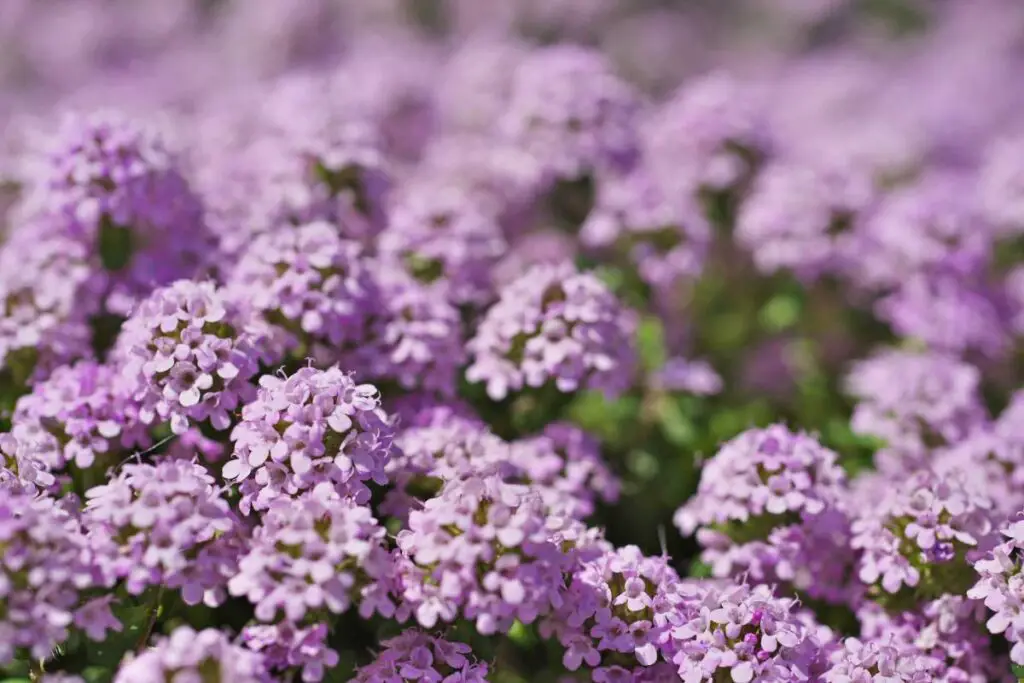
The creeping thyme grows a distinct bundle of little flowers in red, purple, and pink.
They have a citrus smell and attract pollinators like butterflies and bees.
Care for creeping thyme
- Watering: These plants don’t need a lot of water to flourish. Water your creeping thyme every 1 to 2 weeks, ensuring that the soil isn’t moist before adding water.
- Sunlight: Select a location of your raised bed that provides the plants full sunlight for 6 hours a day.
- Soil: The soil for creeping thyme should be well drained to encourage the plant to thrive at its best.
Also read:
- 15 Best Flowers For Hanging Baskets
- 14 Best Flower For Window Boxes
- 17 Best Flowering Plant For A Pot
- 15 Best Flowers For Shade
- 15 Best Flowers For Spring
- 15 Best Flowers For Summer
- 15 Best Flowers For Summer
- 15 Best Flowers For Bees
- 15 Best Flowers For Vegetable Gardens
- 15 Best Flowers For Indoors
Reference: ScienceDirect, American Society of Agronomy, Noble Research Institute, Soil for Raised Beds, Raised Bed Gardening.
